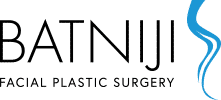Common Goals of Asian Rhinoplasty

While each rhinoplasty patient is unique, each ethnic group tends to have similar nasal characteristics which are worth noting in rhinoplasty procedures. Plastic surgeons who specialize in rhinoplasty generally have a good grasp of the techniques that work well for patients in each group, offering “ethnic” rhinoplasty, which refers to any type of non-Caucasian cosmetic nasal surgery. Asian rhinoplasty is a common request for facial plastic surgeons, but not every provider has the experience to give patients good results. So what are some common goals in Asian rhinoplasty, and how are they accomplished?
Overall Goals
While the goal of many Caucasian rhinoplasty procedures is to reduce the overall size of the nose, many Asian patients are looking for the opposite, seeking instead to build up the height of the nose. Because of this, extensive natural cartilage grafts or nasal implants must be used. While in most cases, cartilage is preferred for this process, sometimes this is not possible. Cartilage can be taken from three different sites: the nasal septum, the ear, and the rib. These sites possess cartilage with different characteristics, and if one site does not have sufficient volume, another source must be used. Let’s look at the ways these techniques can be used to improve nasal aesthetics in Asian rhinoplasty.
Improved Tip Shaping and Projection
Because many Asian noses are flat and wide, the nasal tip often lacks projection and definition, and tissue is often added to lend support and structure to the nasal tip. Additional tip definition and projection can help bring balance to the features and complement overall nasal projection, which typically goes along with tip projection in Asian rhinoplasty.
Greater Overall Nasal Projection
In building up the overall height of the nose, many surgeons favor the use of implants, as the need for stable material is important. However, there are risks to implants, such as extrusion, and some doctors prefer not to use them, favoring cartilage instead. It all depends on the surgeon’s preferred technique and the individual patient.
Nasal Bridge Narrowing
A wide bridge is an issue that often contributes to a flat appearance to the nose, and many patients seek help with narrowing the area for a more refined, projected appearance. However, this should be done subtly if the patient is looking for results that retain ethnic character and promote facial harmony.
Nasal Lengthening
Nasal lengthening is a common technique in Asian rhinoplasty, especially if the patient is seeking a more Western-looking nose. When combined with other techniques described above, the nose may more closely resemble a Caucasian nose, and patients need to be aware that major changes such as these will greatly affect facial balance.
Challenges in Asian Rhinoplasty
Some of the challenges that surgeons face with Asian rhinoplasty are weaker tip cartilage and thicker nasal skin. Thick skin can make healing more difficult, resulting in prolonged swelling and scar tissue. Patients should expect residual swelling to remain for one to two years following the procedure, though preliminary results will be apparent long before all swelling has subsided.
Finding the Right Surgeon
Fortunately, as the United States has become more diverse, demand for ethnic rhinoplasty has increased, prompting more surgeons to sharpen their skills. Because of this, there is a larger base of specialists for patients of Asian descent to choose from. If you’re looking for a seasoned expert in Newport Beach (949-650-8882) or Beverly Hills (310-467-2180), California, come to Batniji Facial Plastic Surgery and meet with double board certified facial plastic surgery Dr. Rami K. Batniji. Dr. Batniji has expertise in ethnic rhinoplasty, and is one of only a few surgeons in the area to perform facial procedures exclusively. Dr. Batniji has helped many patients maintain ethnic identity with rhinoplasty, and assisted others in attaining a more Westernized appearance. If you would like to discuss your personal rhinoplasty goals with Dr. Batniji, call today to schedule a consultation.

